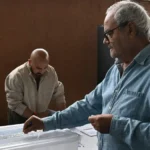
From a seemingly normal Monday to an unpublished blackout in decades in five seconds. On April 28, 2025, it will go down in history as the day when the Iberian Peninsula was paralyzed for a crisis whose reasons are yet to clarify. All Spain and half the world wonder what failed in a system that presumed to be among the most robust of our environment and that has shown its seams.
An executive of the sector who asks for anonymity sees “many unknowns to clear” about this crisis and points three “chain errors”: the stop of a central, probably solar, in Extremadura; Some firewalls, which manage the system operator, Red Electric (REE), which did not work properly; and disconnection with France to avoid infection to the rest of Europe [“Habría que preguntarse por qué”]. The consequence: 60% of the generation in Spain was unplugged because there was no way to balance the system … and ‘total zero’.
The Government, which does not rule out the performance of an “external agent” or a “fortuitous” event as a trigger for this chaos, has been entrusted to the conclusions of the specific committee created for this purpose, chaired by the Ministry for the Ecological Transition and that make up several organisms.
Vice President and Minister Sara Aagesen, who this Friday plans to meet with her Portuguese counterpart, María Da Graça Carvalho, and with the president of the Nuclear Safety Council (CSN), Juan Carlos Lentijo, the European Energy Commissioner informed Thursday, Dan Jorgensen, of the start -up of that committee to “know where we were before it happened before, what happened.
He did it hours after conducting a new “written” information requirement to companies and after meeting in the early hour with Cani Fernández, president of the National Commission of Markets and Competition (CNMC), regulator of the sector and a member of that committee.
This newly created organ must prepare a report that explains what has happened to correct the weaknesses of the system and what measures to adopt, where appropriate, to prevent such a situation from being repeated. Among its members are also the vice council Javier Roca Rivero, commander of the Joint Cyberspace Command, and Javier Candau, head of the Cybersecurity Department of the National Cryptological Center, which depends on the National Intelligence Center (CNI).
The committee met for the first time on Wednesday and plans to do it again on Saturday at the headquarters of Ree, a company in which the State is 20% and does not participate in that investigation commission. Its president, Beatriz Corredor, is in a very uncomfortable position. There is discomfort of the Executive with the former Socialist Minister, who on Wednesday, in her first public interventions almost 48 hours after collapse, ruled out resigning after denying any responsibility of the company in these facts.
One enormity
Ecological transition and Ree have assured that until 12.33 on Monday the situation in the electrical system was “stable.” But everything collapsed in those famous five seconds, one enormity in a system as devilishly complex as electric. There are 250 cycles of 20 milliseconds each if it translates to a frequency of 50 tools, which is what transport networks (the large high voltage lines owned by REE) and those of distribution (which take energy to the points of consumption, of the large electricity) need.
At 12 noon, 33 minutes, 16 seconds and 442 milliseconds on Monday, there was a first oscillation in the frequency of the network “compatible with an apparent loss of generation” in the southwest area of Spain, presumably in Extremadura. The reasons are unknown, how much power is lost, what technology is and where exactly, according to ecological transition.
That first incident was resolved but 1.3 seconds later comes another great oscillation in the same area (again, it is unknown what technology and in what concrete knot, according to ecological transition), which according to Ree “could no longer be stabilized”: there was no way that the flexible generation (hydraulics and gas centrals) could react in time to achieve the delicate instant balance between the supply and demand with which the system works.
The hypothesis that has been handled in recent days is the disconnection in the first instance of a large solar installation in Extremadura. There he has two large photovoltaic Iberdrola, who on Tuesday said that at the time of the blackout “all those centrals of his generation park that had received the relevant instructions from the system operator were coupled.”
Ree “has all the information on instant supply and demand,” said Iberdrola. Its president, Ignacio Sánchez Galán, told Bolsa analysts on Wednesday that the cause of the blackout is something that “has to clarify Red Eléctrica.”
There is no explanation of why the reservations managed by the operator did not work. The truth is that this additional generation drop led to a chain reaction: given that frequency deviation, the system did not have enough inertia to stabilize, the automatic protection mechanisms were fired and the Iberian Peninsula ended up disconnected from the rest of Europe as the interconnection with France jumped. This led to the disappearance of electric mix 15 GW, which is called ‘loading loss’.
The government now investigates what produced these two generation losses and why the system went black on a day in which the photovoltaic was covering about 60% of consumption, something that, from the operational point of view and integration of renewable energy, had nothing particularly extraordinary.
Ecological transition has stressed that in the last year there has been a “similar” solar and wind combination in the Mix in “one in seven days”, 14% of the time, without the catastrophic results on Monday. He believes that this situation would have been “less likely” with more interconnection with France. Regarding whether more storage would have avoided it, “until the ‘post mortem’ cannot be established a counterfactual. It is impossible until we simulate what happened.”
A very widespread hypothesis is that, with a majority of clean generation, the system did not have enough “inertia” to endure those sudden frequency oscillations. This inertia is provided by the kinetic energy that stored the technologies known as synchronous: hydraulic turbines, gas, coal or nuclear.
Renewables today do not have that inertia. Winding and solar panels generate continuous current and to overturn their electricity they need to convert it by alternating current investors to a constant frequency, the aforementioned 50 holds; But they can achieve inertia through a technology called grid formingwhich can also incorporate batteries.
With it, wind and photovoltaic do not use traditional investors (grid following) And they do not need the network already exists: they can start, stabilize and sustain it. Ecological transition says not to have information to blame a system malfunction to the non -incorporation of that mechanism.
The industrial engineer, energy expert and investor Joaquín Coronado, former director of EDP and former president of Redexis, pointed out on Thursday in a LinkedIn post that the blackout “is not due to lack of inertia in installed capacity, nor for lack of available inertia.”
The question “is how it used it used with the management procedures and tools that you have at your disposal”, the so -called technical restrictions (which allow you to function generation that has not married for price in the wholesale market) and the balance services that reserve the system.
In various interviews in recent days, Jorge Sanz, a partner of the consultant Nera, former director of Energy Policy with José Luis Rodríguez Zapatero and former president of the Commission of Experts for the Energy Transition that created the Government of the PP, has pointed to Ree as responsible for the blackout, as collected this Thursday Financial Times.
Sanz declared Eldiario.es on Tuesday that “everything points to a problem of poor management. They may have involved too many solar and wind, which cannot give balance services, and too little hydraulic, gas and nuclear, which they can do. When you are going to give the instruction you have no facilities that can lower load and that would explain what happened. I do not say that it has been so, it only knows it.
The Government has assured that “it is ventured to draw conclusions blaming a concrete technology, plant or circumstance” and acknowledges that “several things” did not work as they should. Ree has ruled out a cyber attack in its facilities, via that the executive has not finished discarding.
Given the confusion due to the causes of the blackout, the ideological battle on renewables and nuclear has been intensified. On Wednesday, the PP conditioned its support to the anti -bar decree to an extension of the reactors that has been claiming for months. Pedro Sánchez has accused the nuclear of being more a problem than a solution in this crisis.
One of the first calls of ecological transition after the blackout went to the Nuclear Safety Council (CSN). After the ‘national zero’ all centrals activated their interior emergency plans and put themselves in pre -aliert mode to refrigerate their reactors, without any risk materializing. One of the priorities in the replacement of the service was that the energy reached the nuclear, which until Wednesday morning had not been coupled to the system.
The sources that allowed the service from absolute zero in a short time for such serious incident were the hydroelectric and centrals. Also the interconnections: at 12.44, eleven minutes after the blackout, Spain was already recovering connection with France as a mooring point to launch the system. And at 13: 07 the first load was fed from Morocco.
This Thursday, the European Association of Entso-E network managers, to which Ree or the Portuguese Ren belongs, announced the creation of a panel of experts to investigate the blackout, as stated in European legislation “for such a serious and exceptional incident.” Entso-e congratulated the Iberian Network Managers for the “Fast and Complete” replacement of the service, with the “support and collaboration” of their counterparts in France and Morocco.
Source: www.eldiario.es

